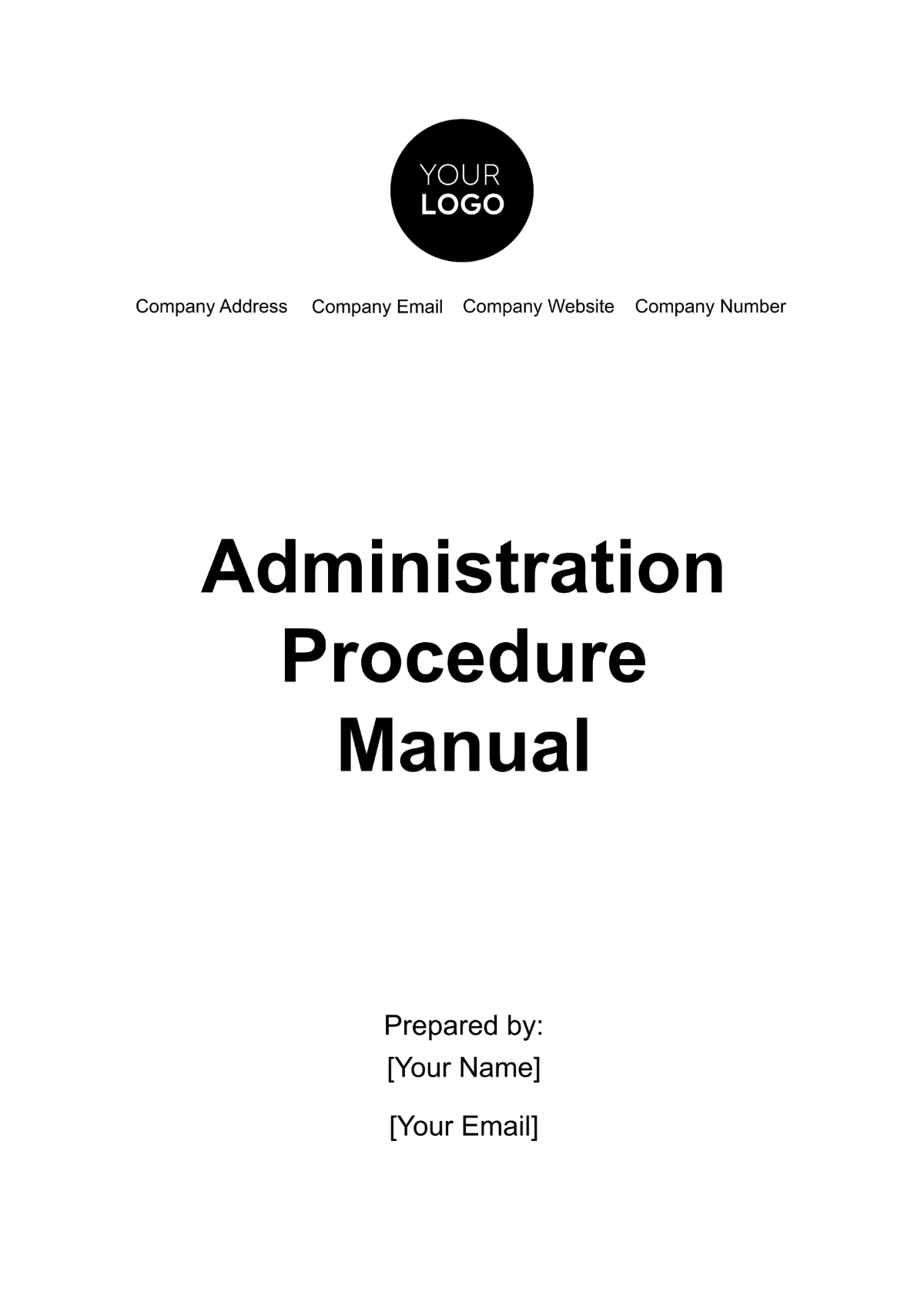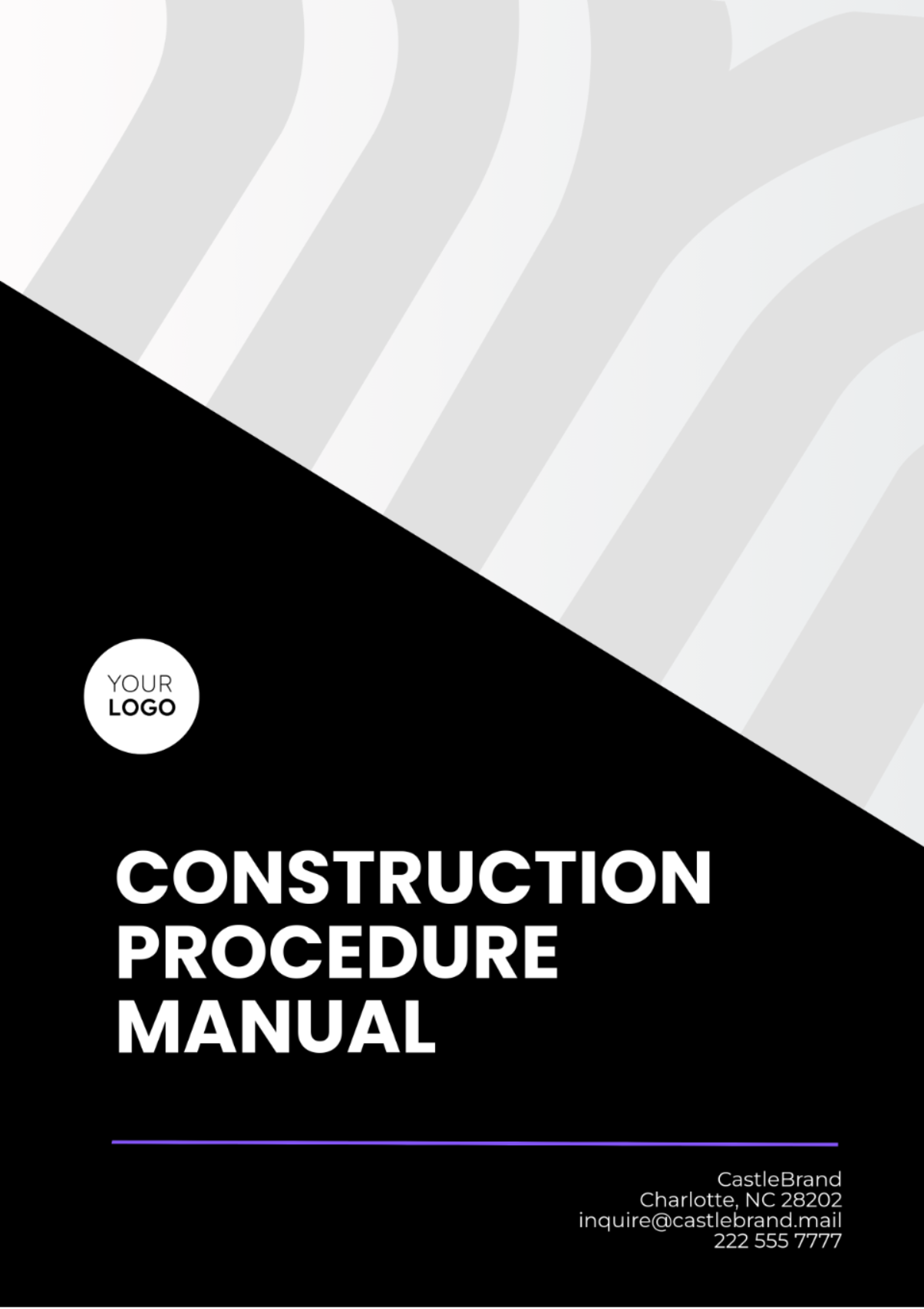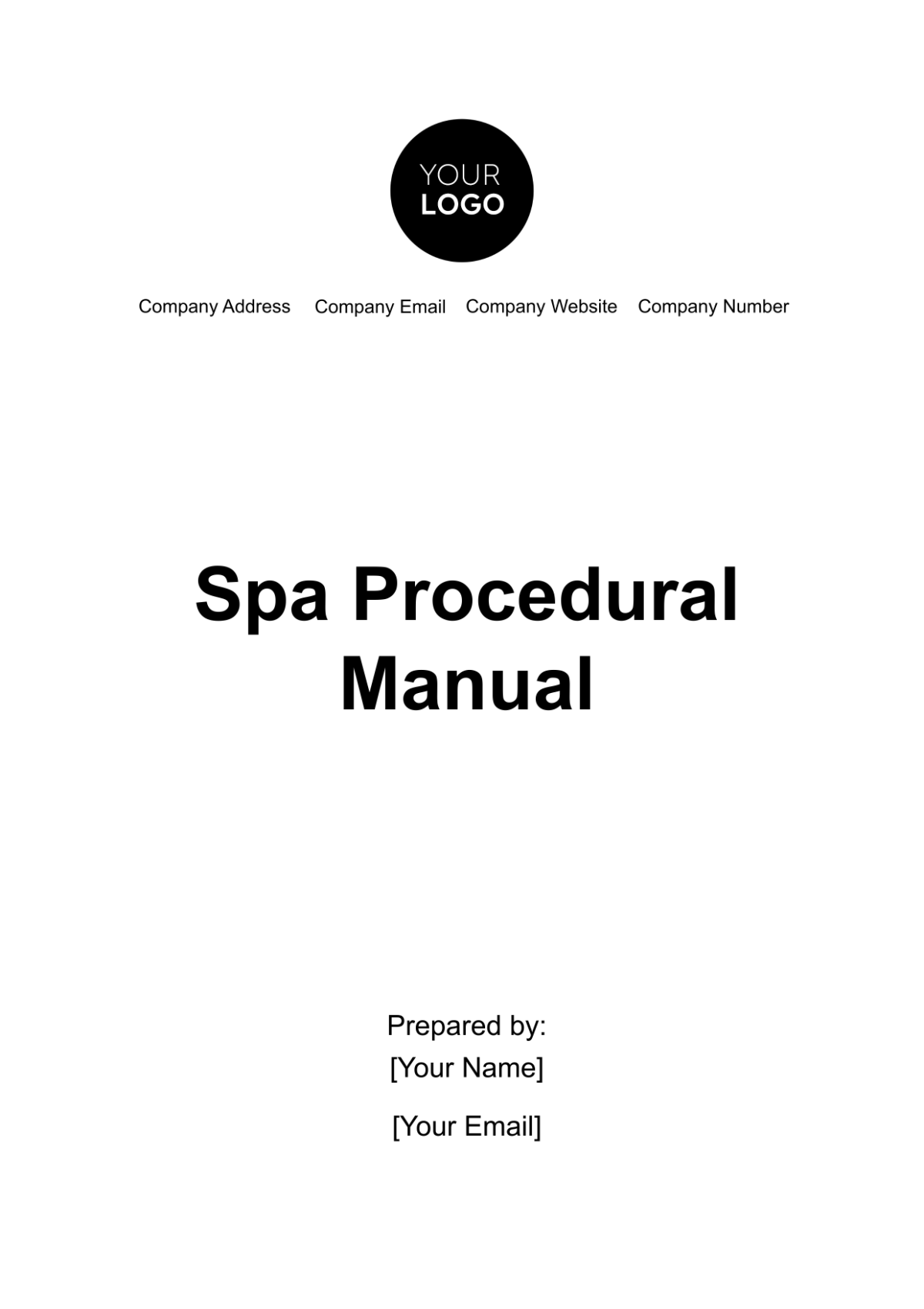Financial Policy & Procedure Manual
I. Introduction and Purpose
This Financial Policy & Procedure Manual is the definitive guide for managing [Your Company Name]'s financial matters. Crafted to instill financial discipline and accountability, it ensures that every financial process, from daily transactions to strategic decisions, is conducted with utmost transparency and efficiency. This manual aligns with the highest regulatory standards, serving as a cornerstone for all financial activities.
Objectives and Scope of Financial Policies
The primary objective of these financial policies is to manage [Your Company Name]'s financial resources with precision and strategic foresight. These policies are the backbone of our financial operations, encompassing a wide range of areas including rigorous accounting practices, detailed budgeting processes, precise financial reporting, robust internal controls, and stringent audit compliance. By covering these crucial aspects, the policies ensure that financial management aligns seamlessly with the company’s overarching strategic goals, facilitating informed decision-making and sustainable growth.
Importance of Compliance
Adhering strictly to these financial policies is not just a procedural mandate; it is vital to the integrity and success of [Your Company Name]'s financial operations. Compliance ensures the company’s protection from various legal risks and financial uncertainties. It plays a pivotal role in enhancing operational efficiency, maintaining accurate financial records, and fostering trust among stakeholders. This commitment to compliance underpins the financial strength of [Your Company Name], reinforcing its reputation as a reliable and ethically sound entity in the business world.
II. Financial Governance and Oversight
This section outlines the financial governance structure, roles and responsibilities of financial personnel, and oversight mechanisms at [Your Company Name]. It emphasizes the importance of clear accountability and efficient decision-making in financial operations.
A. Governance Structure
The financial governance structure is designed to ensure clear accountability and efficient decision-making. It includes the Board of Directors, which provides strategic oversight, and the CFO, who oversees the daily financial operations.
Position | Role and Responsibility |
Board of Directors | Provides strategic financial oversight and approves major financial decisions. Reviews and endorses financial policies and strategies. |
Chief Financial Officer (CFO) | Oversees daily financial operations, implements strategies approved by the Board, and ensures financial health and compliance. |
Finance Committee | A sub-committee of the Board, focusing on detailed financial planning, risk management, and policy development. |
B. Roles and Responsibilities of Financial Personnel
Detailed descriptions of roles and responsibilities ensure clarity and efficiency. The CFO is responsible for financial strategy, while accountants, auditors, and financial analysts handle specific operational aspects like reporting, compliance, and analysis.
Position | Role and Responsibility |
CFO | Develops financial strategies, oversees budgeting, reporting, and financial planning. Acts as the primary liaison between financial management and the Board. |
Accountants | Manage accounting records, ensure compliance with accounting standards, and prepare financial statements. |
Financial Analysts | Conduct financial analysis, assist in budget preparation and financial forecasting, provide analytical support for decision-making. |
Internal Auditors | Perform audits to ensure compliance with internal policies and external regulations, assess the effectiveness of internal controls. |
C. Oversight Mechanisms
Oversight mechanisms include regular financial meetings, comprehensive internal audits, and periodic reviews by the Board of Directors to ensure adherence to policies and identification of areas for improvement.
Mechanism | Description |
Financial Meetings | Regular meetings to review financial performance, discuss budget variances, and plan for future financial actions. |
Internal Audits | Comprehensive audits conducted to evaluate adherence to financial policies and the effectiveness of financial controls. |
Board Reviews | Periodic financial reviews by the Board of Directors to ensure alignment with strategic goals and identify improvement areas. |
III. Accounting Policies and Procedures
This section details [Your Company Name]'s accounting policies and procedures, emphasizing adherence to high standards, accurate revenue recognition, and diligent expense management. These policies ensure the integrity and reliability of our financial records, aligning with Generally
Accepted Accounting Principles (GAAP).
A. General Accounting Principles
At [Your Company Name], our adherence to the highest standards of accounting is unwavering. We rigorously apply Generally Accepted Accounting Principles (GAAP) to ensure that every financial transaction is captured with accuracy and timeliness. Our commitment extends beyond mere compliance; it is about upholding the integrity of our financial data.
This involves consistent application of accounting methods, complete transparency in financial reporting, exercising prudence in recognizing revenue and expenses, and ensuring material financial information is fully disclosed. These principles are the bedrock of our financial credibility, fostering trust among stakeholders and supporting informed decision-making.
B. Revenue Recognition and Reporting
In our revenue recognition and reporting process, we follow the accrual basis of accounting, ensuring that revenue is recorded when it is earned and realizable, regardless of when the cash is received. This method allows our financial statements to accurately reflect the company's true earnings in each accounting period.
We meticulously identify and record revenue from various sources, be it sales, services, or other income, ensuring each dollar is accounted for in the period it is earned. This approach ensures clarity, consistency, and accuracy in our financial reporting, providing a realistic view of the company's financial performance.
C. Expense Management and Reporting
Managing and reporting expenses at [Your Company Name] is a process marked by meticulous scrutiny and strategic alignment. Every expense undergoes a rigorous approval process to ensure it is not only necessary but also aligns with our company's objectives and budgetary frameworks. We categorize and record expenses accurately to facilitate clear financial reporting and analysis.
Regular reviews and audits are conducted to ensure each expense complies with our established policies and budgetary constraints. This disciplined approach to expense management is crucial for maintaining financial control, optimizing resource allocation, and ensuring our expenditures drive value and contribute to our strategic goals.
IV. Budgeting and Financial Planning
This section delineates the structured approach to budgeting and financial planning at [Your Company Name]. It covers the collaborative process of budget preparation, the methodologies employed in financial forecasting, and the rigorous procedures for monitoring and reporting financial performance, ensuring alignment with strategic goals.
A. Budget Preparation and Approval Process
The budget preparation involves a collaborative process with input from all departments. It undergoes rigorous analysis and revisions before final approval by the CFO and the Board.
Step | Description | Responsibility |
Initial Drafting | Drafting the initial budget based on departmental inputs and historical data. | Department Heads |
Review and Adjustments | Analyzing and adjusting the draft budget for operational and strategic alignment. | Finance Team |
Senior Management Review | Review by senior management for strategic alignment and feasibility. | CFO and Executive Team |
Board Approval | Final review and approval by the Board of Directors. | Board of Directors |
A. Financial Forecasting and Analysis
Financial forecasts are based on historical data, market trends, and predictive models to guide strategic planning and decision-making.
Aspect | Description | Methodology |
Revenue Forecasting | Projecting future revenue based on historical trends and market analysis. | Trend Analysis and Market Research |
Expense Forecasting | Estimating future expenses, considering operational plans and inflation. | Historical Data Analysis and Inflation Rates |
Scenario Analysis | Assessing financial outcomes under different scenarios. | Predictive Modeling |
C. Monitoring and Reporting Procedures
Continuous monitoring of budget variances and financial performance is conducted. Regular financial reports are prepared and shared with management and key stakeholders for review and decision-making.
Procedure | Description | Frequency/Format |
Budget Variance Analysis | Comparing actual performance against the budget to identify variances. | Monthly/Quarterly Reports |
Performance Reviews | Assessing financial performance against key indicators and objectives. | Quarterly/Annual Reviews |
Stakeholder Reporting | Providing regular financial updates to stakeholders. | As Required |
V. Internal Controls and Audit Compliance
This section is pivotal in ensuring the financial integrity and compliance of [Your Company Name]. It focuses on the robustness of internal control systems, the proactive management of risks and fraud prevention, and the thoroughness of audit processes. These pillars are essential for safeguarding assets, ensuring accuracy in financial reporting, and maintaining compliance with regulatory standards.
A. Internal Control Systems
Our internal control systems at [Your Company Name] are meticulously designed and regularly updated to protect company assets, enhance operational efficiency, and ensure the reliability and accuracy of financial reporting. These controls encompass a range of checks and balances, including segregation of duties, authorization protocols, and financial reconciliations.
They are integral to preventing errors and irregularities, ensuring that each financial transaction is accurately captured and recorded. We conduct ongoing evaluations of these controls to adapt to changing business environments and emerging risks, thereby maintaining a robust control environment that supports our strategic objectives.
B. Risk Management and Fraud Prevention
Risk management and fraud prevention are cornerstones of our financial governance at [Your Company Name]. We adopt a proactive stance in identifying potential financial risks, ranging from market volatility to operational hazards. Our approach includes regular risk assessments, the establishment of clear policies and procedures to mitigate identified risks, and the implementation of sophisticated fraud detection systems.
We train our employees to recognize and report suspicious activities, fostering a culture of vigilance and accountability. These measures ensure that we are not only prepared to respond to risks but are also proactively working to prevent fraud and financial misstatements, safeguarding our financial assets and reputation.
C. Audit Processes and Compliance Reporting
Audit processes at [Your Company Name] are integral to our financial governance framework. We conduct regular internal audits to assess the effectiveness of our financial controls and ensure compliance with internal policies and external regulations. These audits are complemented by external audits conducted by independent auditors, providing an unbiased evaluation of our financial statements and control environment.
Findings from these audits are thoroughly reviewed and reported to management and the Board, accompanied by recommendations for improvements. This continuous audit cycle not only reinforces our commitment to compliance but also provides valuable insights for enhancing our financial processes and controls.

















































